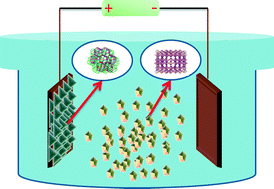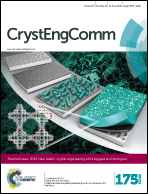Control of interpenetration of copper-based MOFs on supported surfaces by electrochemical synthesis†
Abstract
A study of a copper-based metal–organic framework (MOF) synthesized by an electrochemical route is presented. Morphological and adsorption properties of the MOF synthesized as bulk powder and on supported copper surfaces were investigated. Differences in these properties and structural refinement studies indicate that when 4,4′,4′′-s-triazine-2,4,6-triyl-tribenzoic acid (H3TATB) is used as linker interpenetration can be prevented when the structure is grown on a surface.

- This article is part of the themed collection: 2016 New talent

 Please wait while we load your content...
Please wait while we load your content...